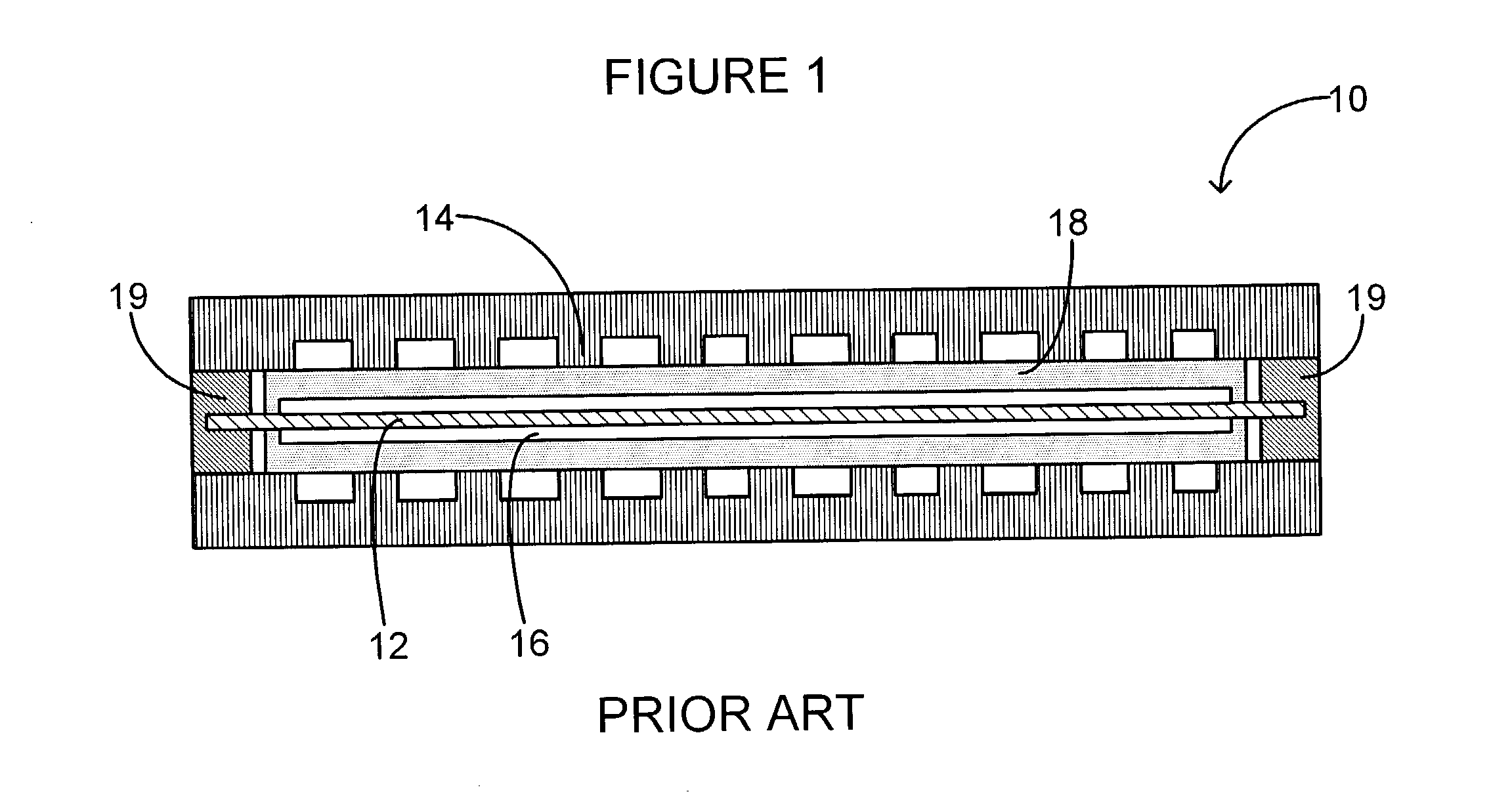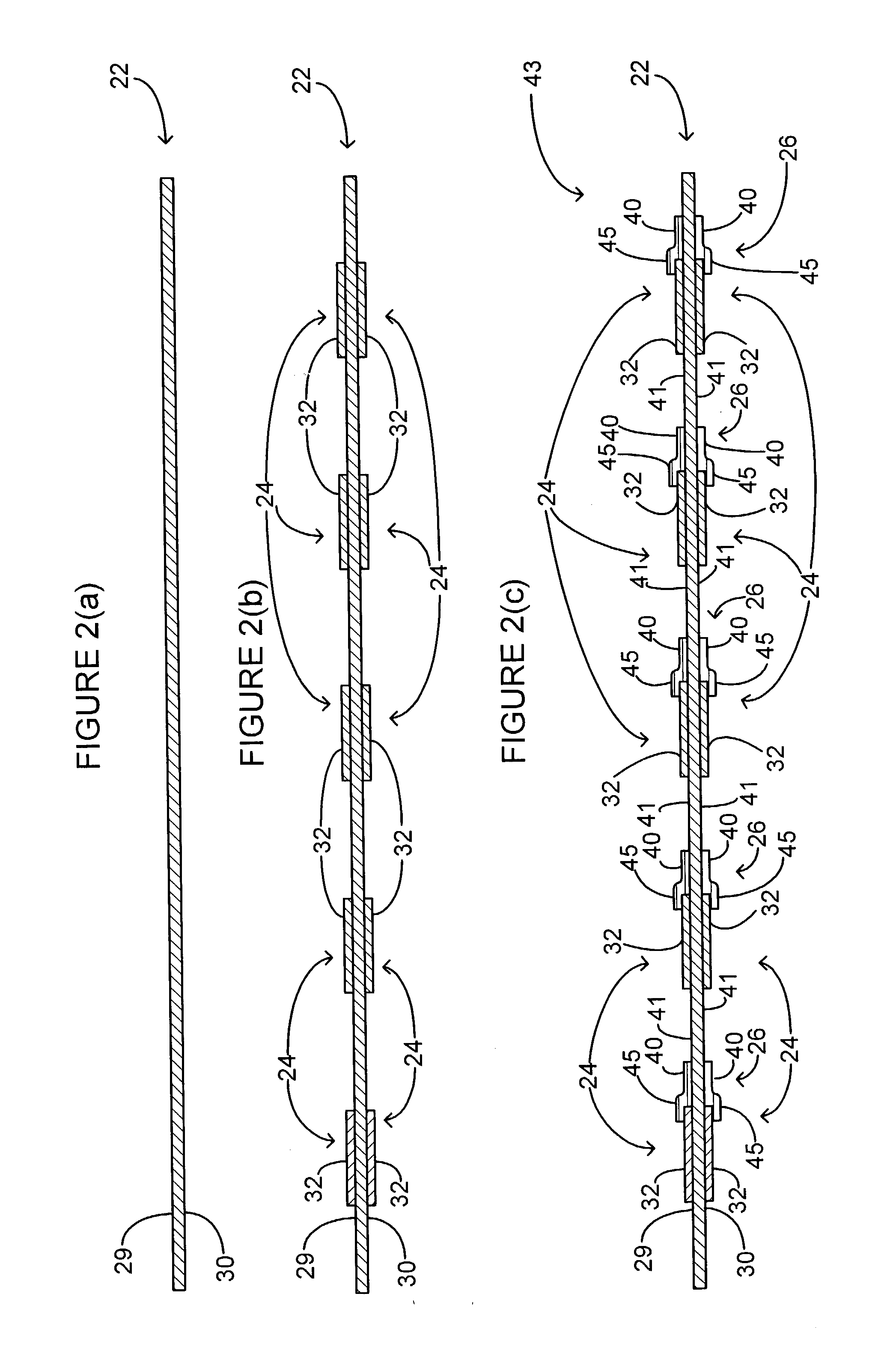Method of fabricating fuel cells and membrane electrode assemblies
a technology of membrane electrodes and fuel cells, which is applied in the direction of cell components, final product manufacturing, sustainable manufacturing/processing, etc., can solve the problems of reducing the reliability of fuel cell products, increasing the complexity of the process, and difficult assembly, so as to reduce production costs and costs.
- Summary
- Abstract
- Description
- Claims
- Application Information
AI Technical Summary
Benefits of technology
Problems solved by technology
Method used
Image
Examples
Embodiment Construction
[0079] The following examples will further illustrate the invention in greater detail, although it will be appreciated that the invention is not limited to the specific examples.
[0080] Membrane formation
[0081] Both porous glass and Teflon.RTM. supported Nafion.RTM. membranes 22 have been researched. Both provide the mechanical support necessary to create dimensionally stable membranes 22. As described below, Nafion.RTM. ionomer or resin is applied to the porous glass or Teflon substrate, through a droplet or spray, or the porous substrate is immersed in Nafion.RTM. ionomer. Several coats are generally required to create a membrane without pinholes.
[0082] Glass substrates may exhibit superior performance because they are hydrophilic, and thus absorb the ionomer better. Dipping appears to yield better performance than dropping or spraying, especially with the glass substrate. Nafion.RTM. saturation can be reached in four dipping operations instead of nine dropping or spraying operatio...
PUM
 Login to View More
Login to View More Abstract
Description
Claims
Application Information
 Login to View More
Login to View More - R&D
- Intellectual Property
- Life Sciences
- Materials
- Tech Scout
- Unparalleled Data Quality
- Higher Quality Content
- 60% Fewer Hallucinations
Browse by: Latest US Patents, China's latest patents, Technical Efficacy Thesaurus, Application Domain, Technology Topic, Popular Technical Reports.
© 2025 PatSnap. All rights reserved.Legal|Privacy policy|Modern Slavery Act Transparency Statement|Sitemap|About US| Contact US: help@patsnap.com



